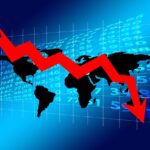Do people have more energy or less after talking to you?
“Our high performers create enthusiasm for things… They create energy, and even though this is intangible it generates client sales and follow-on work as it gets other people here engaged in and supportive of what they are doing.”
ROBERT I. SUTTON Good Boss, Bad Boss (2010)
Bob Sutton is that rarity: a professor who talks in plain terms and rattles off a great story. This is the man, after all, who penned a book called The No-Asshole Rule (and insisted his publisher stick to that title!). His important new book, Good Boss, Bad Boss will, I feel, become a must-read primer for most business leaders.
In the excerpt shown, Professor Sutton is quoting an executive who gave him a very important question for bosses to consider: “How do people feel after talking to you? Do they have more energy or less?”
I want to applaud. What a great question, and what a superb predictor of boss performance. Think it over. A good boss’s key role is to get great performance out of others. As Ralph Emerson told us all those years ago, nothing great was ever achieved without enthusiasm. A boss who generates energy and enthusiasm in others, therefore, is very likely to be a great boss. And one who creates only dismay and saps energy is heading for leadership failure.
So apply it to yourself. Suppose you could instal a discreet detector just outside your office, that measured the energy levels of your employees just as they left after a meeting with you. Would most people leave on a high note, buzzing with enthusiasm, with a skip in their step and a little ditty on their lips, ready to go and engage fully with their work? Or would they leave dispirited, angry – or even bored stiff? Unless most people leave your presence with more energy than when they came in, you are failing a rather basic leadership test.
Researchers have found consistently that people who are rated as good “energizers” are also very often the best performers and best-ranked leaders. How do they do it? Professor Sutton tells us that they are good at several things: they create optimism about the road ahead; they engage fully with the person sitting in front of them at any one time; they value and ask for the ideas of others; and they help people to feel they are making progress in their own work.
How different that is from most of the bosses we know, who do the following ‘de-energizing’ things routinely: express gloom and claim things are not in their control; only pretend to engage with people, but interrupt them frequently and keep fiddling with their smartphones while listening; only pay lip-service to anyone else’s ideas and keep banging on about their own; and never remember to worry about the progress and aspirations of others. That is the energy-sapping boss most commonly seen at all levels of organizations.
These people can do great harm. Sutton highlights research that suggests that having just one ‘bad apple’ on a team (a person who saps energy, generally expresses gloom, fails to contribute, or just has poor inter-personal skills) can cause a performance disadvantage of 30 to 40 per cent compared to teams with no bad apples.
This bears reflection. Are you appointing leaders or key executives who generate energy in others – or dissipate it? Bad behaviour is unfortunately very contagious – but so is positive energy. An ‘energizer’ can act like a battery charger – regularly give people who come in contact with him or her a shot of power. They make being at work worthwhile, and working for your organization desirable.
So if you want to ask yourself how good a leader you are, start observing: do I generate net positive energy, or deplete it?

Buy Sunny Bindra's new book
The X in CX
here »
Popular Posts
- Where are you rushing to—your funeral?June 29, 2025
- How to spot a real thinkerJune 15, 2025
- Built the app, forgot the flowJune 22, 2025
- The map will appear—once you start walking.July 6, 2025
- The pause that saves usJune 8, 2025















